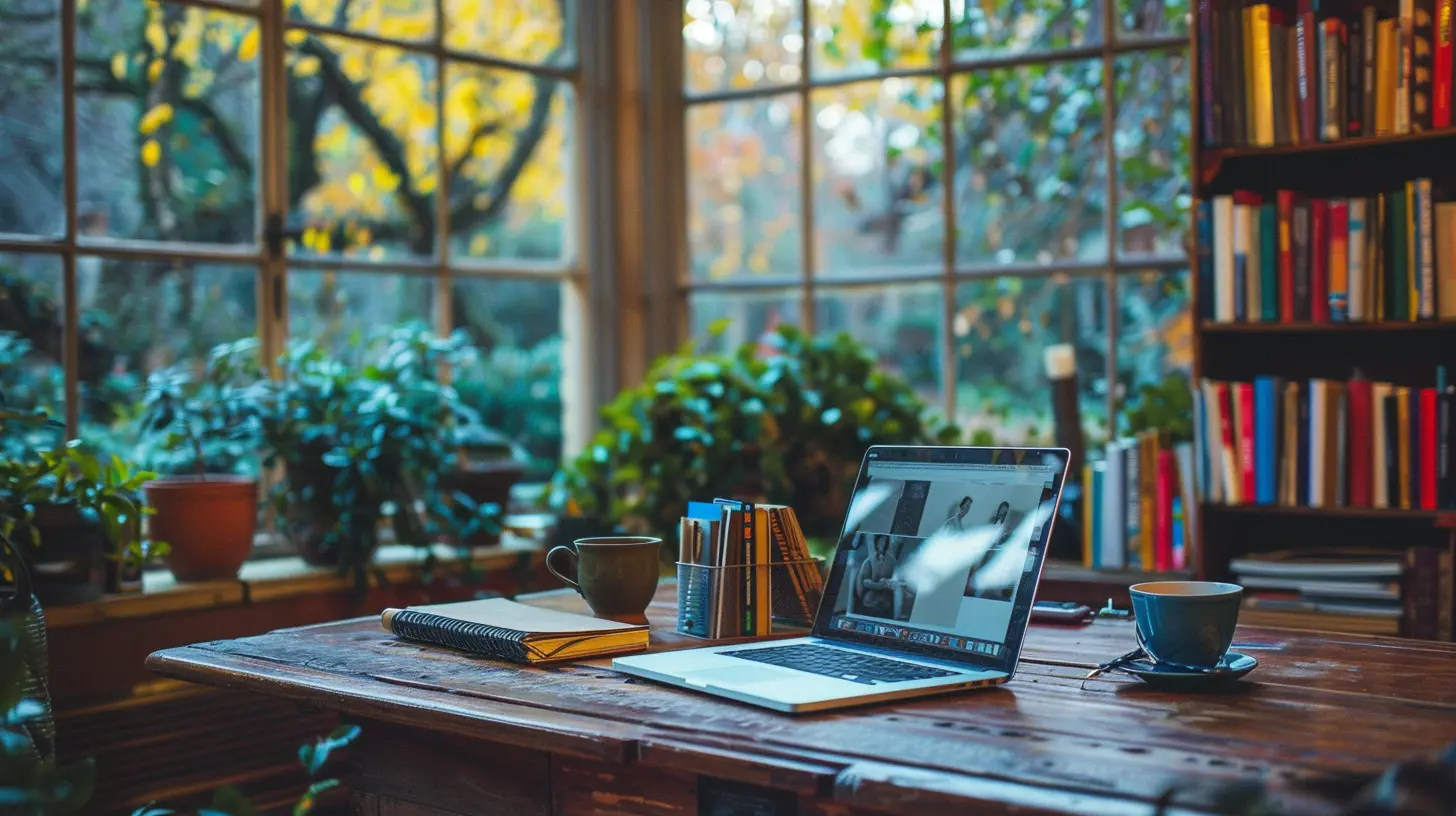28 June 2025
Studying can be tough, especially when you're surrounded by distractions. Have you ever sat down to focus, only to find yourself scrolling through your phone or staring at the wall? If so, you’re not alone! Creating a distraction-free study environment is essential for boosting concentration, improving productivity, and achieving academic success.
In this guide, we’ll walk through practical steps to set up your perfect study space—one that helps you stay focused and get things done. Ready? Let’s dive in! 
Why Does a Distraction-Free Study Space Matter?
Before we talk about how to create one, let’s understand why it’s important.- Improves Focus – A clutter-free and quiet space allows you to concentrate better.
- Boosts Productivity – Less time wasted on distractions means more work gets done.
- Enhances Retention – When you’re fully engaged, you absorb and remember information more effectively.
- Reduces Stress – A calm and organized environment can help lower anxiety and make studying feel less overwhelming.
Now that we know why, let’s figure out how to make it happen! 
Step 1: Choose the Right Location
First things first—where you study matters.Find a Quiet Place
Loud environments can break your focus, so choose a spot away from noisy areas. If you live with family or roommates, let them know when you need uninterrupted study time.Consider Lighting
Natural light is best—it keeps you alert and boosts your mood. If that’s not an option, go for warm, soft lighting to reduce eye strain. A desk lamp with adjustable brightness can work wonders.Avoid High-Traffic Areas
Studying in the kitchen or living room? Not the best idea. These areas are full of distractions. Instead, pick a spot where people aren’t constantly walking by.
Step 2: Declutter Your Study Space
A messy desk equals a messy mind. Too many distractions can disrupt your flow.Keep Only What You Need
Clear your desk of anything unrelated to studying. Have your laptop, textbooks, notebooks, and a pen—nothing more.Organize Your Materials
Use shelves, folders, or a desk organizer to keep everything within reach. A neat space helps you think clearly and saves time searching for stuff.Remove Digital Clutter
Your computer can be just as distracting! Close unnecessary tabs, organize your desktop, and use apps like Cold Turkey to block distracting websites.
Step 3: Eliminate Digital Distractions
Let’s be honest—our phones are the biggest culprits when it comes to distractions.Put Your Phone Away
Place it in another room, or at least out of sight. Out of sight, out of mind!Use Focus Apps
There are plenty of apps designed to help you stay on track:- Forest – Helps you focus by growing a virtual tree.
- Freedom – Blocks distracting apps and websites.
- Pomodone – Combines the Pomodoro technique with to-do lists.
Turn Off Notifications
Constant pings and vibrations are concentration killers. Put your phone on Do Not Disturb mode while studying.Step 4: Set a Study Schedule
Having a routine helps train your brain to focus at certain times.Use the Pomodoro Technique
Study for 25-30 minutes, then take a 5-minute break. Repeat this cycle 4 times, then take a longer break (15-30 minutes). This method keeps your brain fresh and prevents burnout.Find Your Productivity Peak
Are you a morning person or a night owl? Choose study hours when your energy and focus are at their highest.Set Clear Goals
Instead of saying, “I’ll study biology today,” be specific:✅ "I’ll review Chapter 5 and complete 10 practice problems."
Clear goals keep you accountable and make studying feel more manageable.
Step 5: Use Noise to Your Advantage
Some people need total silence, while others work better with background noise.Try White Noise or Nature Sounds
Apps like Noisli or YouTube offer background sounds that can mask distractions. Ocean waves, rain sounds, or even simple white noise can help improve concentration.Listen to Instrumental Music
If complete silence is frustrating, opt for instrumental music or lo-fi beats. Lyrics can be distracting, so stick to wordless tunes.Noise-Canceling Headphones
If you live in a noisy environment, investing in noise-canceling headphones can be a game-changer.Step 6: Stay Comfortable but Not TOO Comfortable
Your environment should be cozy but not so relaxing that you end up dozing off.Pick a Good Chair and Desk
An ergonomic chair and a sturdy desk can help prevent back pain and fatigue. Avoid studying from your bed—it sends sleepy signals to your brain!Adjust Room Temperature
Too hot or too cold? Either extreme can be distracting. Find a comfortable middle ground to stay focused.Keep Snacks and Water Handy
Hunger and dehydration can kill concentration. Have a water bottle nearby and some healthy snacks like nuts or fruit for a quick energy boost.Step 7: Train Your Brain to Stay Focused
A distraction-free space is only effective if your mind is disciplined.Practice Mindfulness
Before studying, take a deep breath and set an intention: “For the next hour, I will focus fully on my work.”Start with the Hardest Task First
Your brain is freshest at the beginning of a study session. Tackle the most challenging subject first to get it out of the way.Take Breaks Wisely
Use breaks to recharge, not as an excuse to binge-watch Netflix. Stretch, take a short walk, or do some deep breathing exercises.Step 8: Set Clear Boundaries with Others
Distractions aren't always things—they're sometimes people.Tell People When You’re Studying
Let your family or roommates know when you need uninterrupted time. You can even put up a “Do Not Disturb” sign if necessary.Use Headphones as a Signal
Wearing headphones (even if you’re not listening to music) can indicate that you're in "focus mode" and shouldn't be disturbed.Create a Study Agreement
If you share a study space with someone, agree on quiet hours and rules to minimize interruptions.Final Thoughts
Creating a distraction-free study environment isn’t just about removing external distractions—it’s about training your brain to stay focused, setting up a productive space, and building good habits.It might take some trial and error to figure out what works best for you. But once you do, you’ll notice a massive difference in how much you can accomplish!
So, what’s your next step? Take a look at your study area and start making those small changes today. Your future self will thank you!









Weston McDonough
Silence your phone, not your thoughts—study smart!
December 25, 2025 at 9:39 PM